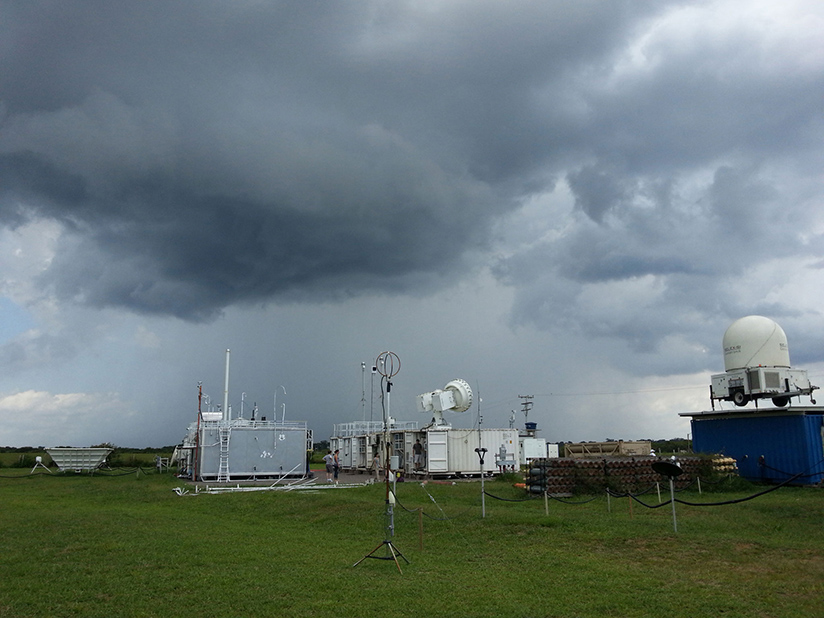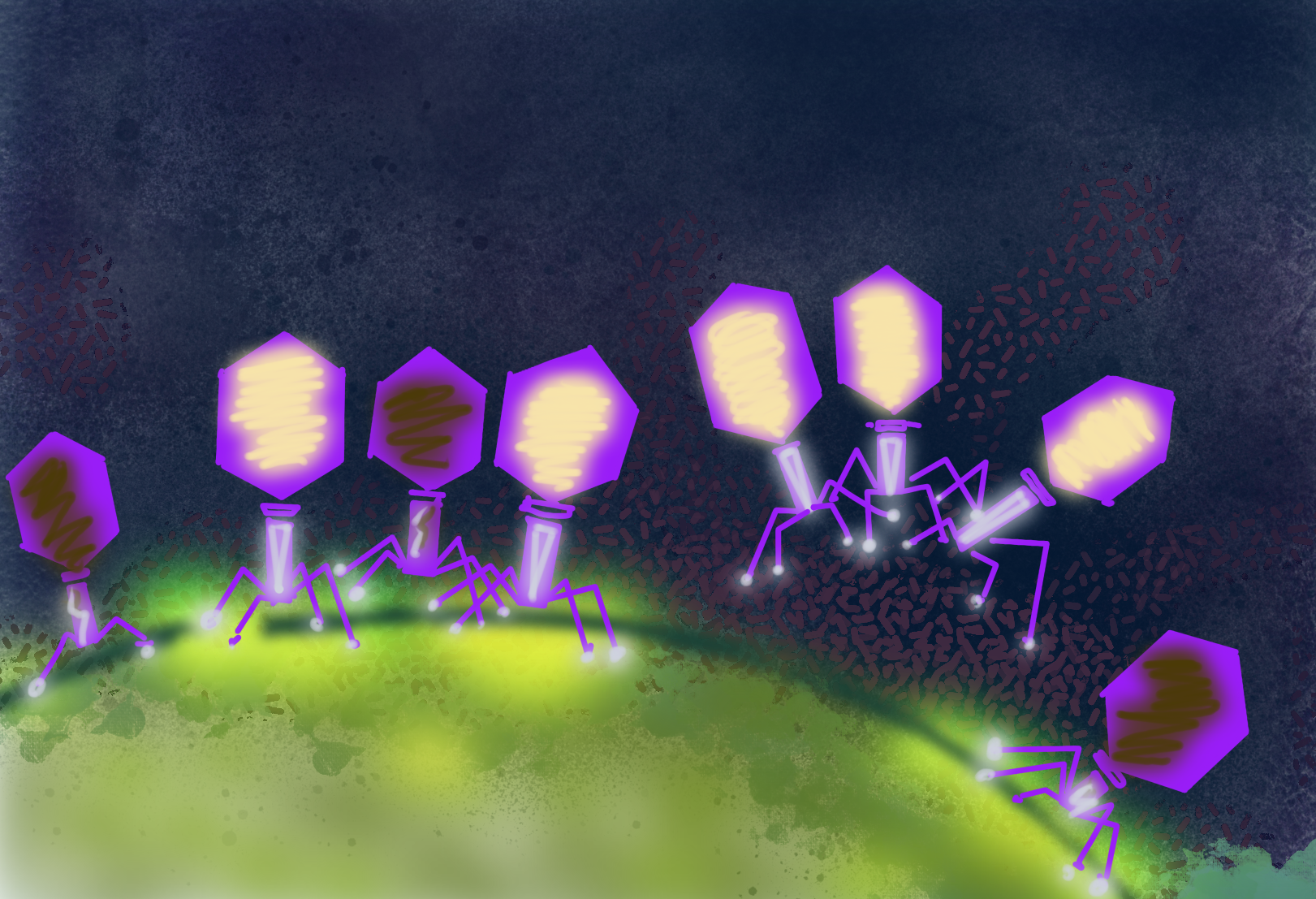Small Particles Play Large Role in Tropical Thunderstorms
Ultrafine aerosol particles produce bigger storm clouds and more precipitation than larger aerosols in pristine conditions.

The Science
Aerosol-cloud interactions remain one of the largest uncertainties in climate projections. Ultrafine aerosol particles—less than 50 nanometers wide—can be abundant in the lower atmosphere. Traditionally, they’ve been considered too small to affect cloud formation. A unique set of observations from the Amazon let scientists study the role of aerosols in tropical storm cloud development. The scientists concluded that when tiny particles greatly outnumber larger particles in a warm and humid environment, the result is enhanced condensation that releases more heat, producing much more powerful updrafts. More warm air is pulled into the clouds, lifting more droplets aloft and producing more ice and snow, lightning, and rain.
The Impact
The newly discovered enhanced condensation mechanism shows ultrafine aerosols invigorate thunderstorms in a much more powerful way than their larger counterparts. The addition of ultrafine aerosols in otherwise low-aerosol environments can have large impacts on storms in warm and humid places. These places include tropical and some subtropical regions. Incorporating these results in Earth system models is important. Why? It will let scientists better understand changes in certain types of storms between pre-industrial and present-day conditions.
Summary
The biggest challenge in unraveling the effect of aerosols on clouds and climate is isolating their effects from changes due to other environmental conditions, such as temperature and humidity. This study capitalized on a unique data set from Department of Energy’s (DOE’s) GoAmazon research campaign, with atmospheric observation sites located around the Amazon basin and the heavily populated city of Manaus. Notably, in the Amazon wet season, pre-storm dynamic conditions are very consistent, and the observational data downwind of Manaus clearly distinguished enhancement of the ultrafine range of aerosols compared to the more pristine sites. The research team performed observational analyses of the data, including updraft velocity and aerosol measurements. They then conducted high-resolution simulations of a sample case, using a detailed cloud microphysics model to scrutinize the mechanism. They found that the ultrafine aerosol particles introduced by the Manaus pollution plume enhanced convective intensity and precipitation rates to a degree not previously observed or simulated. The detailed simulations showed that the drastic increase in convective intensity was primarily due to enhanced condensational heating. The ultrafine particles reach higher into the cloud and provide many more landing sites for water vapor to collect and condense into cloud droplets. This enhanced condensational heating at lower levels in the cloud boosts storm intensity much more powerfully compared to the previous “cold-cloud invigoration” concept—enhanced heat from ice-related processes at upper levels.
Contact
Program Managers
Shaima Nasiri
Department of Energy, Office of Science, Biological and Environmental Research, Atmospheric System Research
Shaima.Nasiri@science.doe.gov
Sally McFarlane
Department of Energy, Office of Science, Biological and Environmental Research, Atmospheric Radiation Measurement Climate Research Facility
Sally.McFarlane@science.doe.gov
Principal Investigator
Jiwen Fan
Pacific Northwest National Laboratory
jiwen.fan@pnnl.gov
Funding
This study was supported by the Department of Energy (DOE) Office of Science as part of the Atmospheric System Research program. This research used Pacific Northwest National Laboratory Institutional Computing resources. Y.Z. and Z.L. were supported by National Science Foundation and National Science Foundation of China. D.R. was supported by BACCHUS European Commission. The DOE Atmospheric Radiation Measurement Climate Research Facility’s GoAmazon field campaign data were used. The X-band and S-band radar data were supported by the Cloud Processes of the Main Precipitation System project. The authors acknowledge support from the Central Office of the Large Scale Biosphere Atmosphere Experiment in Amazonia (LBA), Instituto Nacional de Pesquisas da Amazonia (INPA), Universidade do Estado do Amazonas, and the local Research Foundation (FAPEAM). L.A.T.M., P.A., and H.M.J.B. were supported by the São Paulo Research Foundation. The work was conducted under authorization of the Brazilian National Council for Scientific and Technological Development. For the operation of the Amazon Tall Tower Observatory site, the authors acknowledge support by the German Federal Ministry of Education and Research, the Brazilian Ministério da Ciência, Tecnologia e Inovação, and the Amazon State University, FAPEAM, LBA/INPA, and Center of Conservation Units of the Ministry of Sustainable Development Sustainable Development Reserve Uatumã.
Publications
J. Fan, D. Rosenfeld, Y. Zhang, S.E. Giangrande, Z. Li, L.A.T. Machado, S.T. Martin, Y. Yang, J. Wang, P. Artaxo, H.M.J. Barbosa, R.C. Braga, J.M. Comstock, Z. Feng, W. Gao, H.B. Gomes, F. Mei, C. Pöhlker, M.L. Pöhlker, U. Pöschl, and R.A.F. de Souza, “Substantial convection and precipitation enhancements by ultrafine aerosol particles.” Science 359, 411 (2018). [DOI: 10.1126/science.aan8461]
Related Links
Atmospheric Radiation Measurement website: GoAmazon campaign
Pacific Northwest National Laboratory press release: Tiny particles have outsize impact on storm clouds, precipitation
Highlight Categories
Performer: DOE Laboratory , SC User Facilities , BER User Facilities , ARM
Additional: Collaborations , International Collaboration



